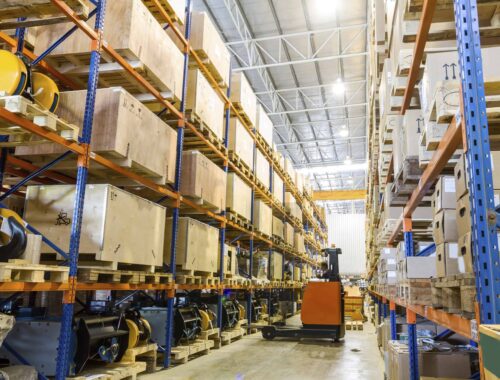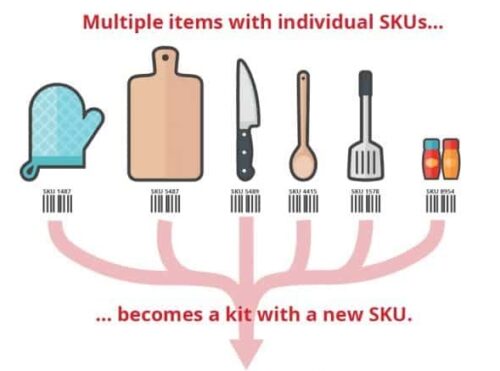Here’s the raw reality: warehouses don’t typically love receiving floor-loaded shipments. Why? Because unloading floor-loaded containers is much more complicated, time-consuming, and hazardous than receiving palletized stock. That said, there are times when floor stacking is the best (or only) option for one of your shipments. So, it’s critical to understand the eCommerce fulfillment logistics of unloading floor-loaded containers.

What is floor-loaded freight?
Floor-loaded freight is a truckload or a container filled with merchandise from floor to ceiling. Most fulfillment centers prefer palletized containers over floor-loaded shipments because there’s less labor required for loading and unloading palletized stock. And floor loading is only available for full truckload shipments; less than truckload freight must be palletized.
Also, a floor-loaded freight shipment poses some risks for your products. The shipper needs to be very careful to secure boxes within a floor-loaded container, and if they don’t do it correctly, the load can shift during shipping. Additionally, if moisture gets in, boxes in contact with the container’s floor can sustain water damage.
Still, there are some circumstances where floor-loaded shipments are the better choice. For example, floor loading freight maximizes container space, and shipping companies sometimes choose this method to reduce the shipping cost per item by fitting more boxes into a container.
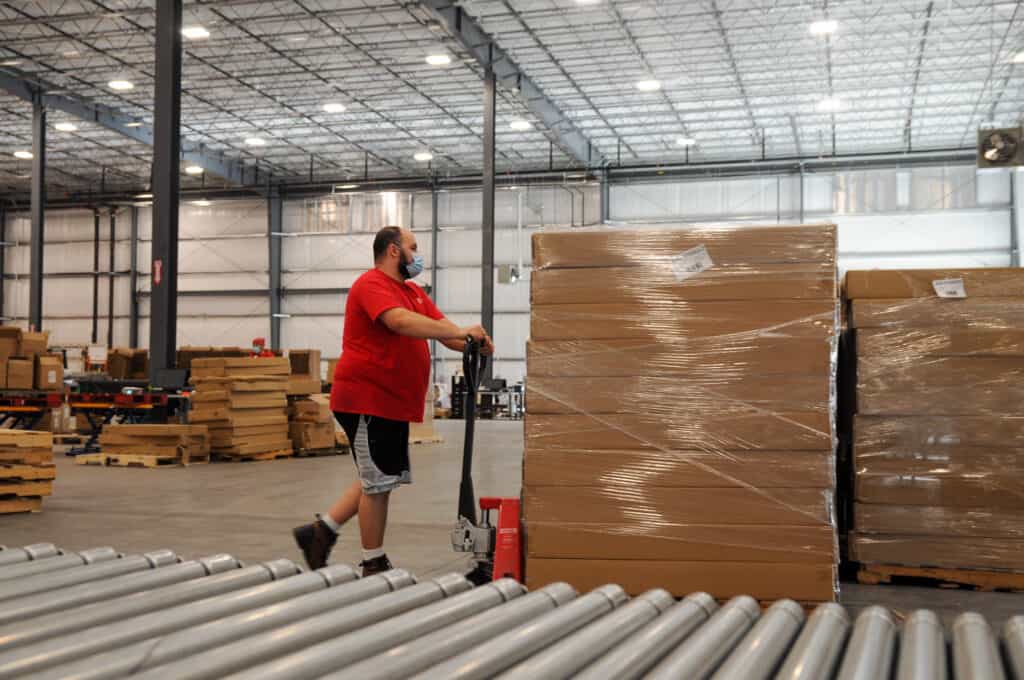
Palletized shipping vs. floor-loaded shipments
Palletized shipping involves stacking boxes on a pallet and fastening the load to the pallet using straps or plastic wrap. Here are the main points you should know about these two shipping methods:
- Pallets can be loaded into a container without a load strap or load bars because pallets are less likely to shift during shipping.
- A forklift operator can quickly unload pallets containing heavy boxes. Unloading floor-loaded containers is a manual job.
- A floor-loaded container may hold more stock because the pallets themselves take up space within a palletized container.
- Some products are too big or irregularly shaped to attach to a pallet, so you have to floor load them for transport.
Most order fulfillment warehouses, including Red Stag Fulfillment’s warehouses, are designed primarily to handle palletized stock. Forklifts move pallets where they need to go for storage or order processing. Unloading floor-loaded containers requires taking individual parcels from the stack and comes with several challenges.
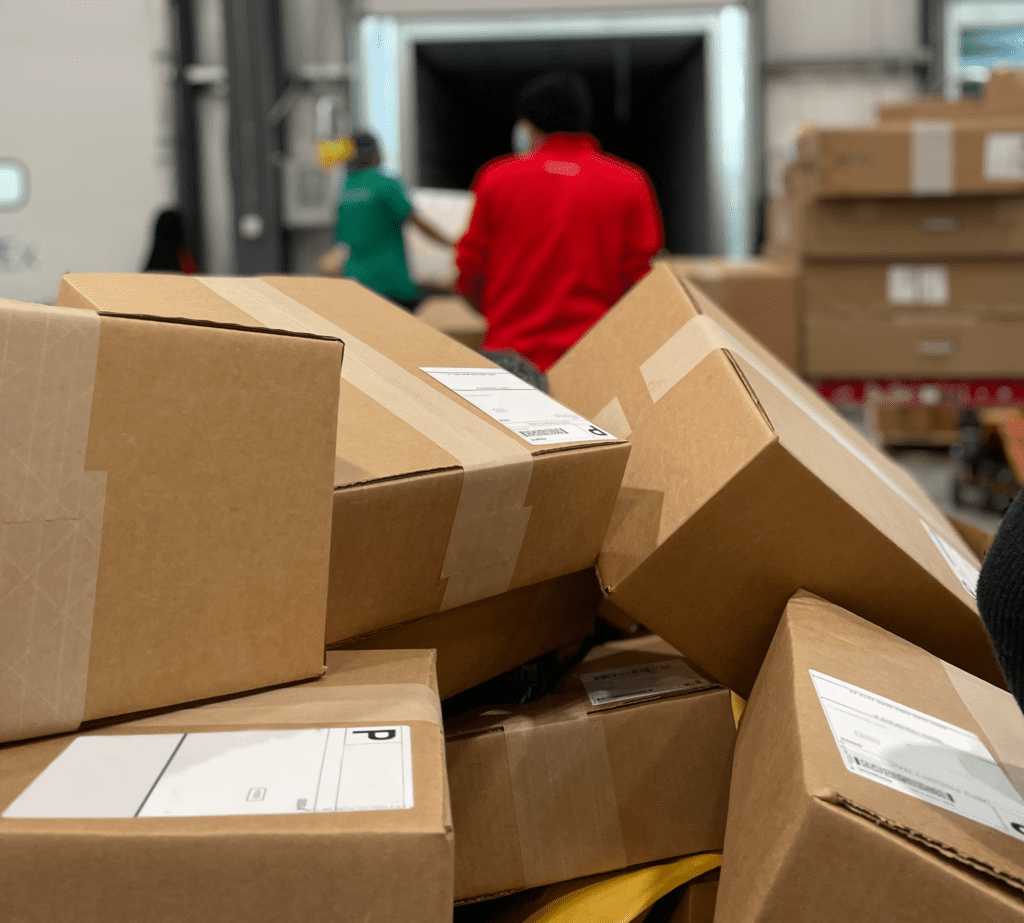
4 challenges of unloading floor-loaded containers
Many 3PLs charge extra for unloading floor-loaded containers. For example, Amazon FBA only allows floor loading in very limited circumstances and may sometimes turn away a floor-loaded shipment. Here’s why.
Shifting during transit
The items in a floor-loaded shipment are more likely than palletized freight to shift during transit. A container that was neatly stacked but not properly secured at the point of departure may arrive tumbled, making it harder to unload. And shifting can cause damage, clogging the receiving process as warehouse associates note which items are damaged. Load quality issues are more common with a floor load than with palletized freight.
Risk of falling boxes
A floor-loaded shipment is a Jenga-like structure of cross-stacked boxes. That creates a hazard for the receiving team because boxes may fall without warning during unloading, either because the load shifted or because someone pulled out the wrong Jenga peg causing a whole column to tumble. Warehouse workers must handle floor-loaded freight gingerly to avoid getting injured.
One parcel at a time unloading
In a palletized container, each shipping pallet may contain dozens of boxes. Each forklift load carries all those boxes together into the warehouse. It’s the opposite for floor loads. Warehouse associates must unload floor-loaded shipments one package at a time, which takes considerably more person-hours of labor. And OSHA guidelines limit the amount that one worker can be required to lift to 50 pounds, so heavy and bulky products may require two people for unloading. That can lead to additional labor costs.
The limitations of human vs. forklift loads
A 40-foot container can hold 20 standard pallets. With multiple forklifts on the job, a warehouse receiving team can get the freight shipment completely unloaded and send the container back to the port quickly. That saves you money on detention charges and fees for delays in returning shipping containers to the port.
Contrast that with the labor-intensive process for unloading floor-loaded freight. Dock workers must remove unpalletized boxes by hand, incurring additional labor costs.
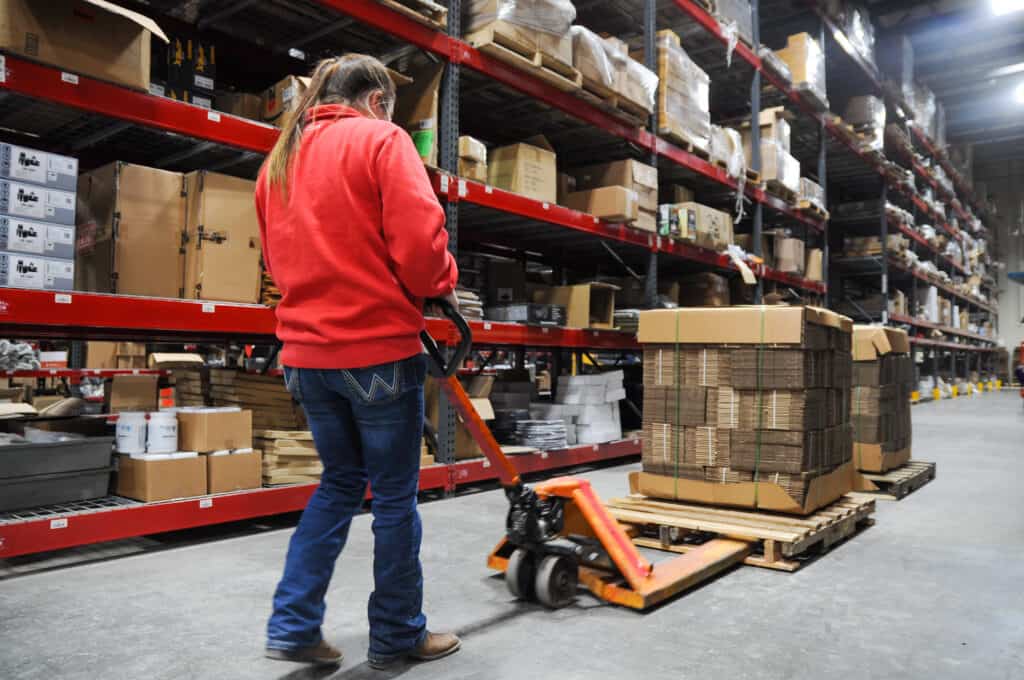
What does it cost to unload a floor-loaded container?
The receiving cost for a floor-loaded shipment can be several times the cost to unload palletized freight because the process is so labor-intensive. Before you send a floor-loaded shipment to your fulfillment center, check with your 3PL rep and get an estimate for receiving with floor loading vs. palletizing. Your 3PL might not be able to give you an exact price because floor-loaded shipments can vary significantly, but you’ll be able to have a rough estimate for planning purposes. Final receiving costs will depend on the freight stack method and whether you’re shipping smaller boxes, heavy and bulky products, or a mixed shipment.
In some cases, floor stacking may actually save money. If it allows you to ship a load in fewer containers, the shipping cost savings might offset the extra receiving charges. And, while most shippers use pallets, some manufacturers only offer floor-loaded freight.

Best practices for floor-loaded freight
If you need to send a floor-loaded container to your fulfillment warehouse, you can take some steps to reduce problems and speed up the receiving process.
- Make sure to load your shipping containers properly. A best practice is to stack the heaviest boxes on the bottom using an alternating pattern (much like a Jenga stack). Smaller boxes stack on top, leaving at least 6 inches of open space at the top of the stack. Use zip ties, metal straps, and other types of load straps to secure the load. The method you use to stack boxes can improve the load quality and reduce receiving costs.
- Let your 3PL know that you’re sending a floor-stacked shipment. That gives the team lead time to assemble the labor needed to unload quickly. And some fulfillment centers may charge more for unplanned services than ones they can plan for ahead of time. Some warehouses may turn away floor-loaded containers without prior approval.
- Don’t shrink wrap or bundle your boxes. Remember that this loading and unloading has to be done by humans without forklifts. Shrink wrapping may lend stability, but without palletizing, it makes your shipment much more labor-intensive to unload.

Red Stag Fulfillment policies for unloading floor-loaded containers
Red Stag Fulfillment is committed to providing quality service that extends beyond pick and pack fulfillment services. We work with our clients to optimize their supply chain, starting at the manufacturer. That could mean adjusting packaging to avoid dimensional weight shipping charges or using sturdier boxes to save money by eliminating the need for an overbox. And we work with you to figure out the best way to get your products to our warehouses.
We prefer palletized freight and charge extra for unloading floor-loaded containers because of the labor involved. However, with our fulfillment guarantee to process inbound stock within two business days, your products won’t get stuck on the receiving dock no matter what shipping method you prefer.
If you have questions about freight shipping methods or any other aspect of eCommerce fulfillment services, don’t hesitate to reach out. Our experienced fulfillment team is happy to help.
More about floor-loaded shipping:





